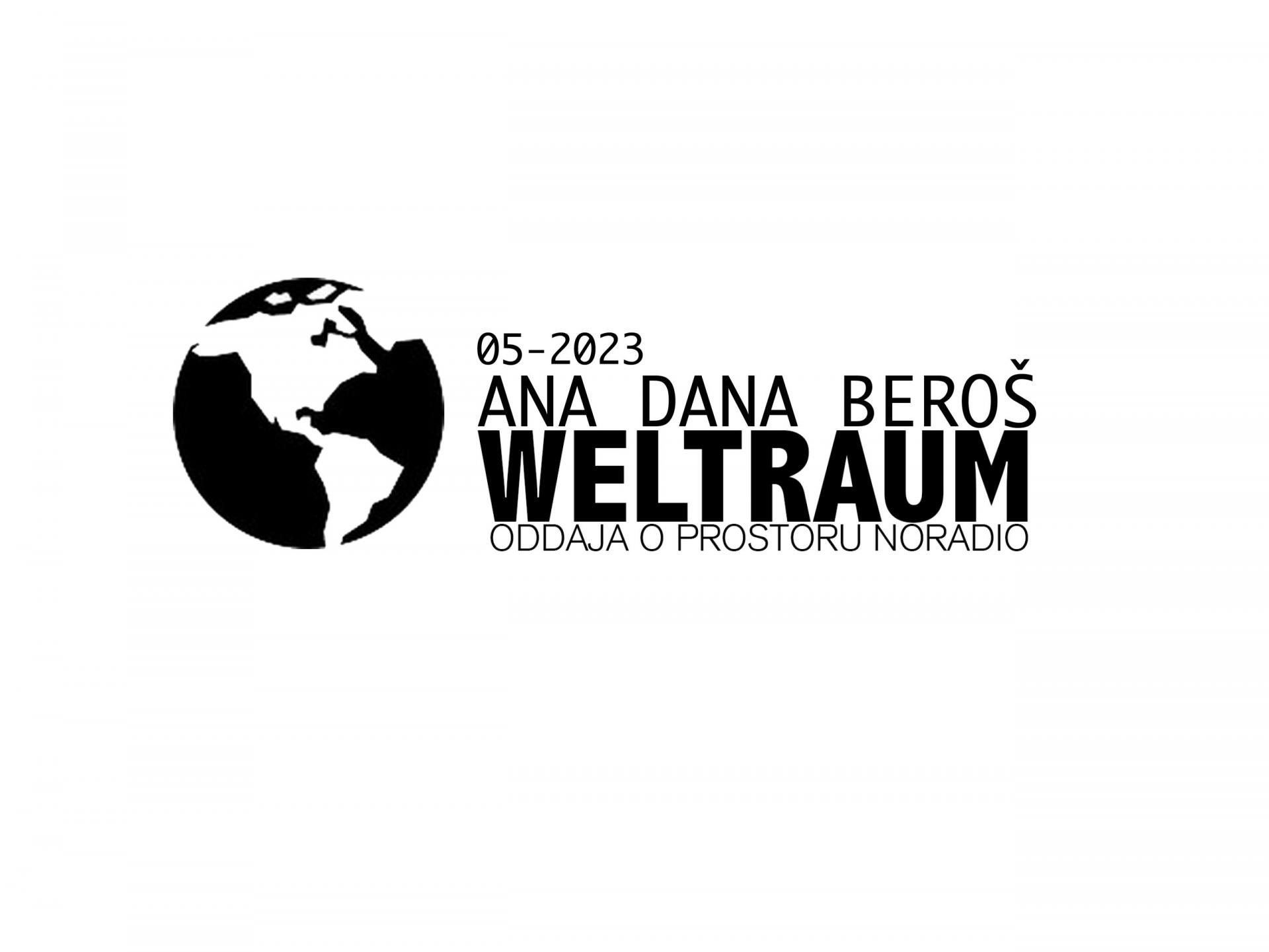Ana Dana Beroš: From Care To Cure And Back
Under the umbrella of the LINA platform a program From Care to Cure and Back was initiated by Ana Dana Beroš in collaboration with the Association of Architects of Istria (DAI-SAI). "Treat, cure and give care again", is the idea behind this program, says Ana Dana and stress how important is to deal with experimental publishing practices in architecture.
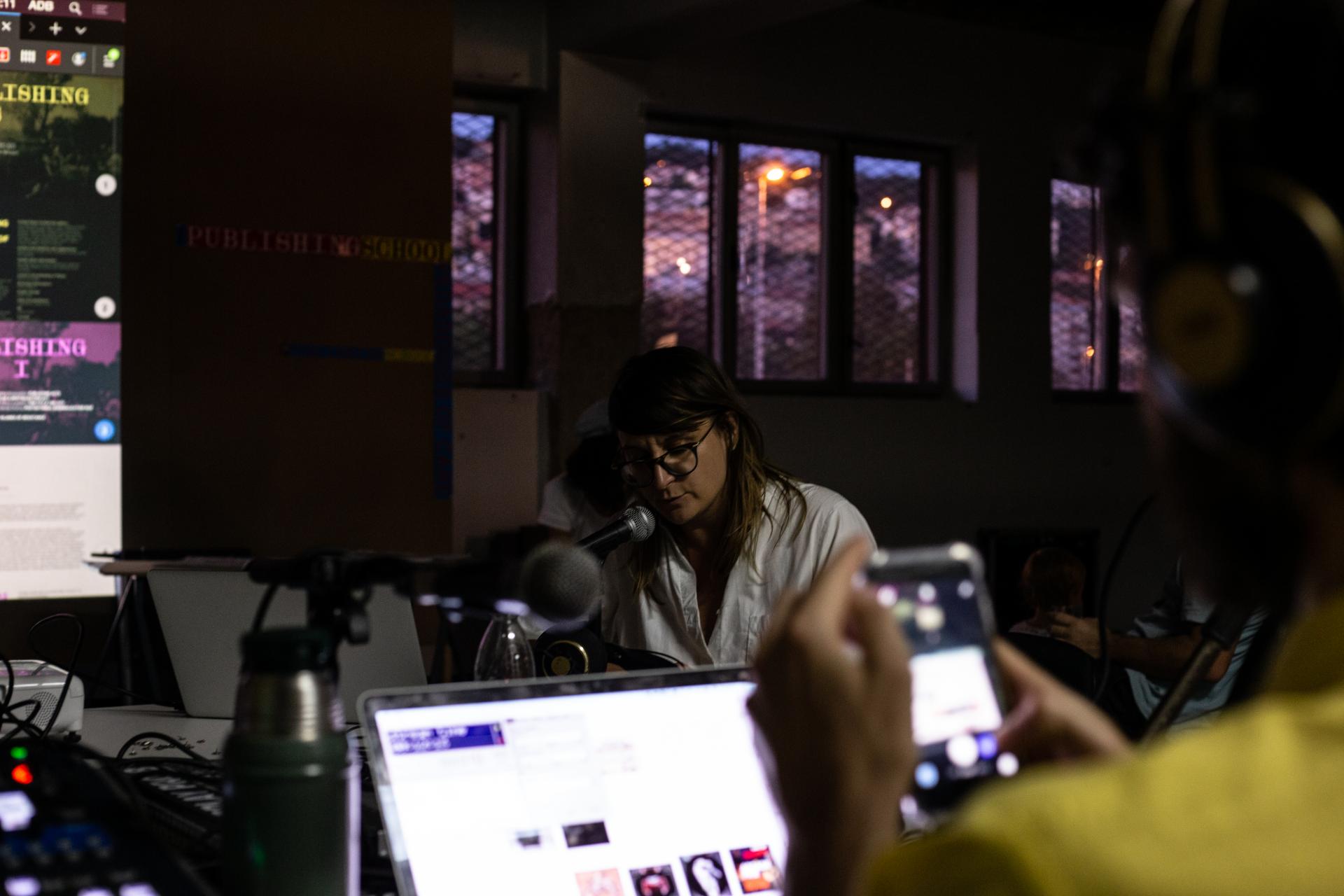
Ana Dana Beroš at the Publishing Acts: The Publishing School Pedagogies of Care in Rijeka (2020). | Photo © Matija Kralj Štefanić
She is referring how care was and is missing in the formal education of architecture, in the form of a humanistic way of thinking and asking background questions, which primarily concern the users of buildings. With the construction of the state, public projects fell into the background. It became clear that we must learn from our own history, repair, preserve and take care together, and not build unnecessarily.
How will architecture change in the future?
ADB: It will change drastically. I ask myself all the time is it ethical to build anymore? Or should we be focusing on “the great repair” of the broken world? Or is it broken architecture, or mankind, or more than human environment? This question are arising because we were witnessing for more than half of century the capitalist modernity, with its emphasis on innovation, growth, and progress, its economic system based on consumerism and wasteful use, and profligacy, has led to a ruthless exploitation of humans and nature.
Architecture has played a huge small part in this, as the statistics on greenhouse gas emissions and construction and demolition waste prove. As a counter-strategy to capitalism’s creative destruction, we should focus on the repair, in which nurturing and maintenance that should become the key strategies for the action.
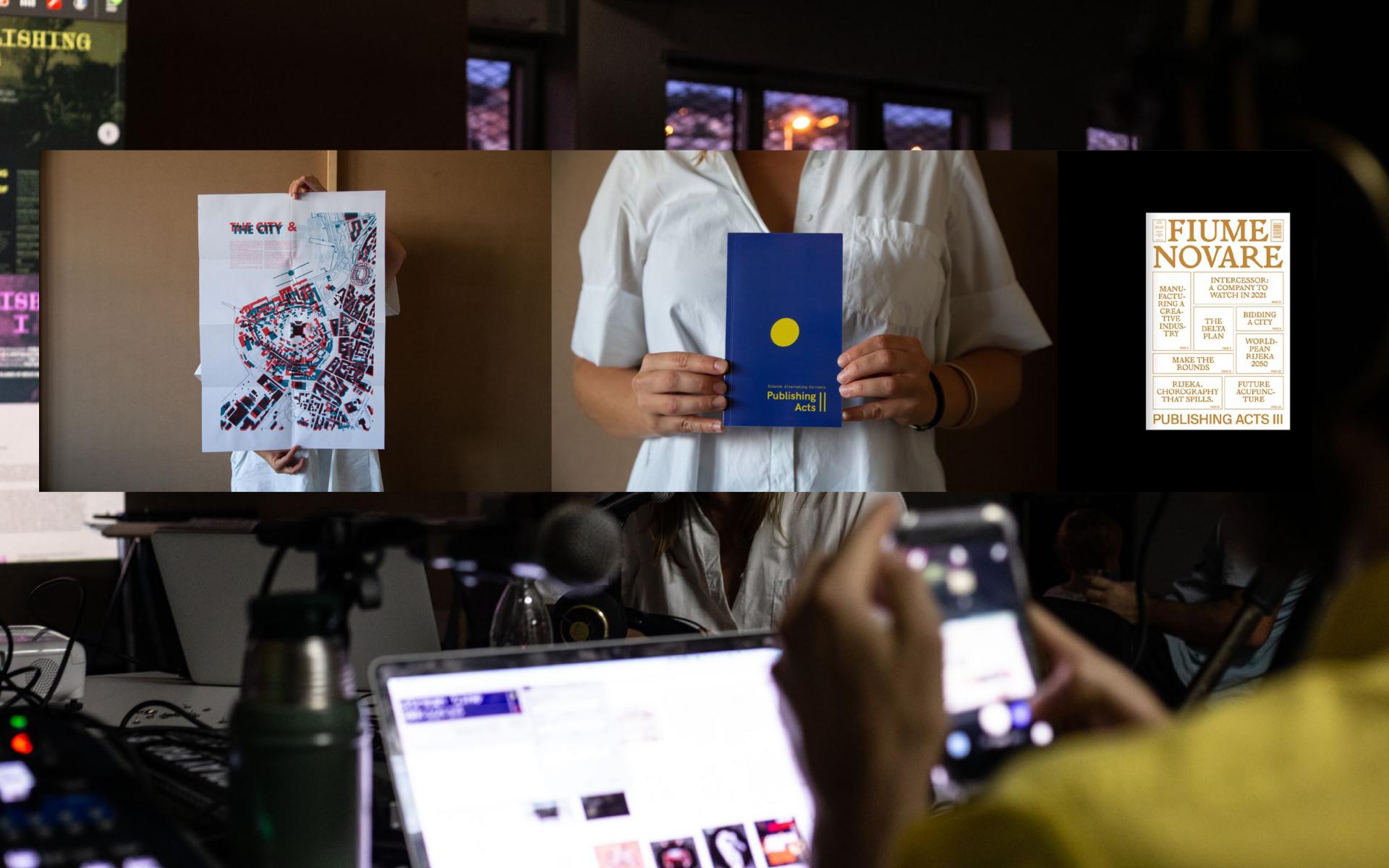
Publishing Acts I-II-III (2017-2020) | Photo © Matija Kralj Štefanić, collage Ana Dana Beroš
Here is not just mine thinking, the notions of care in architecture have been part of many international exhibitions starting from the Critical Care at the Architektur Zentrum in Viena curated by Elke Krasny and Angelika Fitz, the term The Great Repair was used by Milica Topalović and her team at ETH, then are here Pedagogies of the Broken Planet. This is how I see the future.
What does your critical spatial practice include?
ADB: My critical spatial practice has components of artistic research, documentary filmmaking, curating, publishing/broadcasting, exhibition design, activism and post-disciplinary de-schooling. This is work that overlaps, diverges, converges, runs in parallel, in circles, and in many cases came before and goes beyond.
A whole multitude of practitioners and theorists have been developing work in an expanded field such as this, quite different perhaps from the one Rosalind Krauss identified in 1979. Critical spatial practice was coined by the theorist Jane Rendell in 2000s as a helpful way of describe projects located between art and architecture, that both critiqued the sites into which they intervened as well as the disciplinary procedures through which they operated.
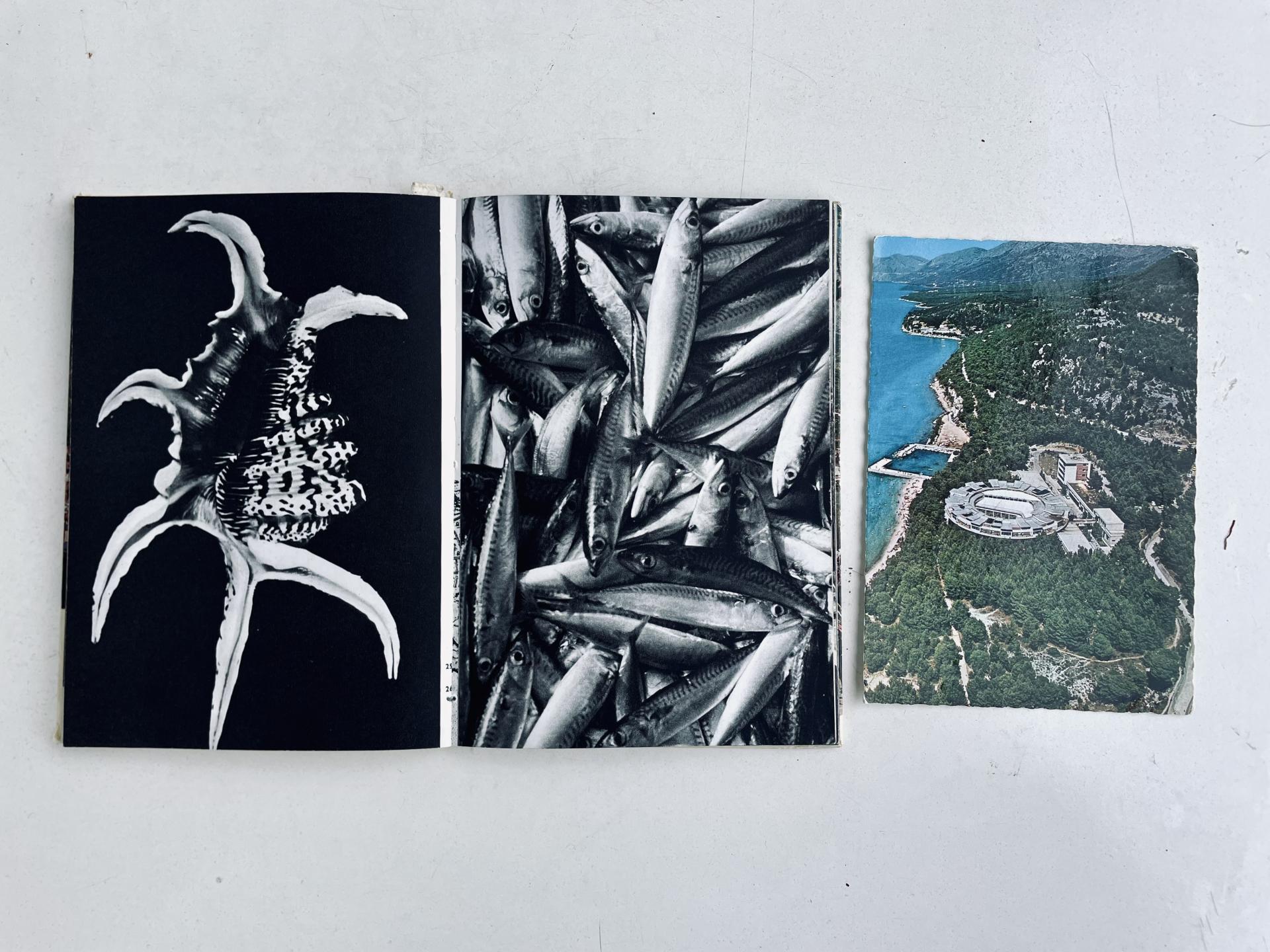
LINA - DAI-SAI programme From Cure to Care and Back. | Photo © Ana Dana Beroš
Taking into account the wide spectrum of intellectual fields close to architecture and space - from urban anthropology to human geography - I consider connecting architecture with feminist theory crucial for the development of critical spatial practices. Gender-based analysis of architecture, its multiple forms of representation, where subjects and spaces are viewed as performatives and constructs, is aimed primarily at questioning the world around us.
Moreover, critical spatial practices are necessarily self-critical and tend to change society, in contrast to orthodox architectural practices that seek to maintain and strengthen the existing social and spatial order of inequality.
How is the LINA platform important for your development on architecture of care?
ADB: I have started Architecture of Care actually developing through the concept of Pedagogies of Care within the predecessor platform to LINA, the former Future Architecture. The Publishing School: Pedagogies of Care is an exploration on how we learn and produce knowledge collectively through emancipatory practices of care. The program builds upon the three Publishing Acts and their collective efforts in shaping unordinary publications, unlikely publics and unorthodox spatial imaginaries.

Publishing Acts, The Publishing School -Pedagogies of Care (Rijeka, 2020). | Design © Marin Nižić
Can radio become again a media for architecture (like in the time of Wright) and in which way you work with it?
ADB: Regarding the radio, as a powerful architectural tool, or to the media that architecture uses, I can agree with many who say that architecture has nowadays become transmedial. We don’t create only in the offline dimension, in concrete and brick, but in the online sphere as well. All media are allowed, or rather necessary, to attain goals of architecture. I have been involved in radio forever as been working for Croatian radio HR3, I have been developing the Radio Schools with artists during the Pedagogies of Care. As our colleagues from dpr-barcelona we claim to this cover that radio is louder than bombs that relates to their motto.
Beside radio you work is also dedicated on documentary film?
ADB: My documentary work is dedicated both to architecture and migration topics. Within the Croatian Architects’ Association I have been leading, then co-leading a documentary project Man and Space and working as a scriptwriter on long feature documentaries dedicated to the life achievement laureates.
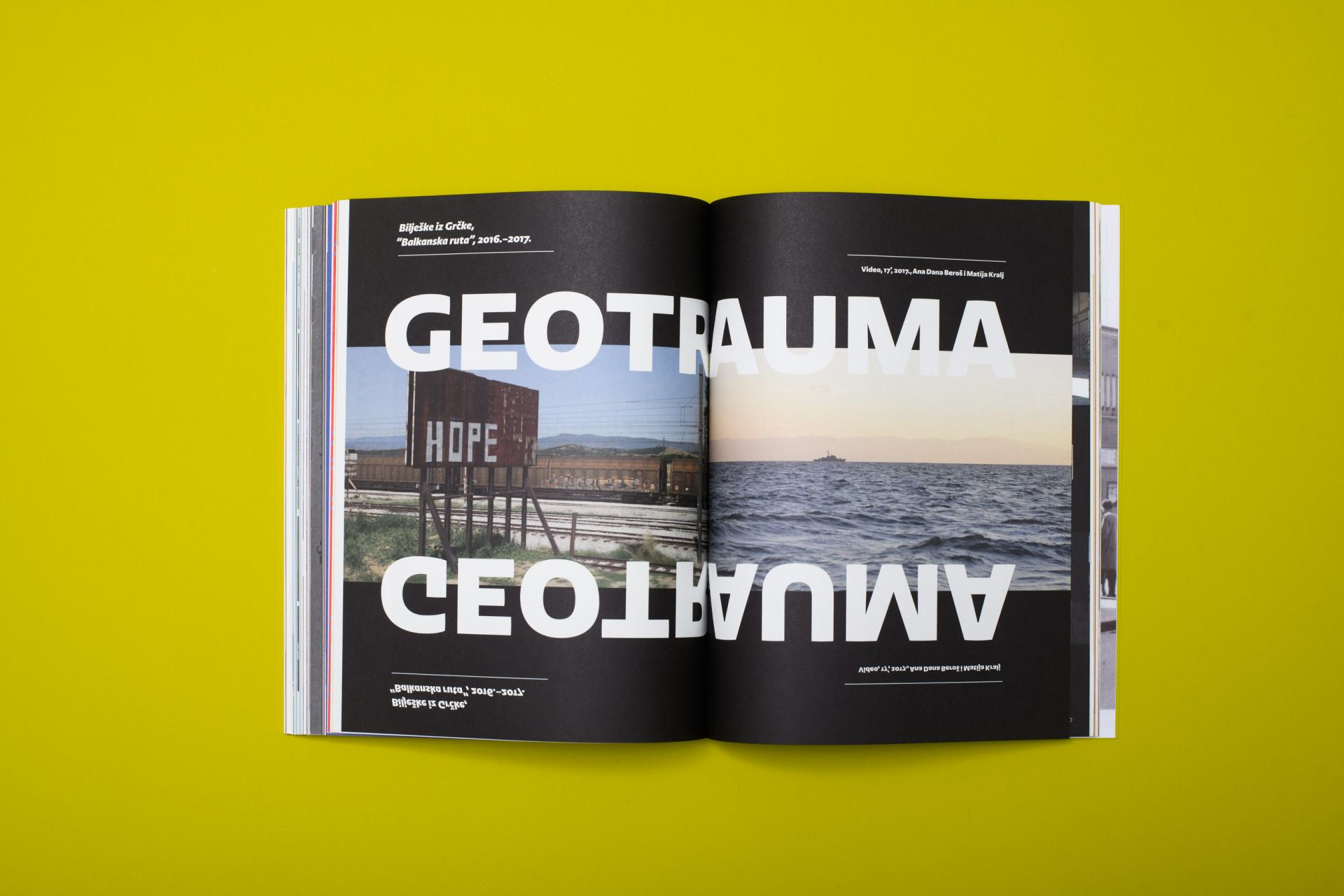
Geotrauma - Ana Dana Beros and Matija Kralj Štefanić at the V Magazine. | Foto © Marija Gašparović
In pluriannual research on the relational reading of migrant bodies and migrant territories, conducted together with the artistic partner and cinematographer Matija Kralj Štefanić, we have been departing from nonrepresentational theories, the practices of witnessing that produce knowledge without contemplation. The experimental documentary trajectory builds on previous investigations in the Mediterranean: in reception camps (Contrada Imbriacola, Lampedusa), hotspots (Moria, Lesbos), makeshift camps (Idomeni, Greece), urbanized camps (Dheisheh, Palestine), city refugees (Mardin, Turkey), and, recently, in the Balkans, where we live.
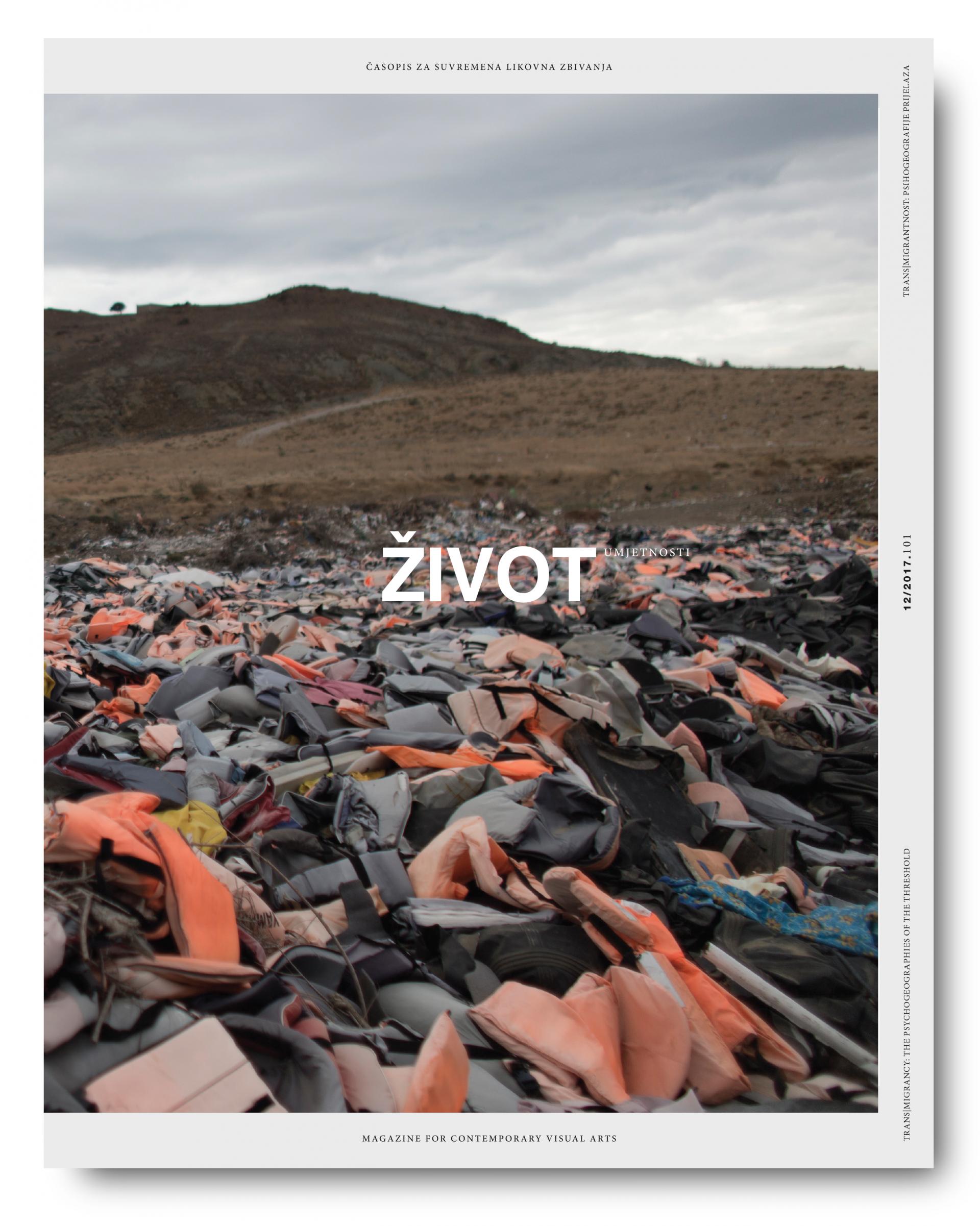
Transmigrancy - Life of Art Magazine, 101-2017 edited by Ana Dana Beroš: Geotrauma. Photo © Matija Kralj Štefanić (design bilic mueller studio)
We refined methods of producing critical, nonrepresentational images, and of gathering and documenting evidence found in borderscapes, in order to make a transmedial and migratory archive, a border documentarism, that is in constant articulation. After the pandemic, from mute images of migrants’ residuals that speak for themselves, we have started creating a polyphony of protagonists of migrant origin and those involved in the No Border movement in a documentary series Three-Voiced: Stories on the Move, broadcast in Croatia. As a contemporary response to the rise of fascist phenomena in Europe, In the era of fetishizing borders and territorialization of bodies, it was crucial to start resonating in a new voiced register for topics that are not heard, or rather systematically not listened to in our societies.
It is just one of many attempts at confronting structures of silencing, asking: Can we, through collective vibration, transform silence into a path of newfound hope and solidarity?
How Intermundia opened an important topic of transmigration in Europe?
ADB: Back in 2014, Intermundia research project questioned alternating border-scapes of trans-European and intra-European migration. The focus was put on the Italian island of Lampedusa, metonymy for contemporary Western conditions of confinement. For me, back then it was clear that the dominant discourses on illegal migration obscure the role of international migration as a regulatory labour market tool. It was important to stress that migrants must be conceived primarily as workers, not only as immigrants. It seemed that, in the pre-pandemic times of constant mobility, involuntary territorial shifts of the precarious workers was parallel to the detention of undesired migrants.
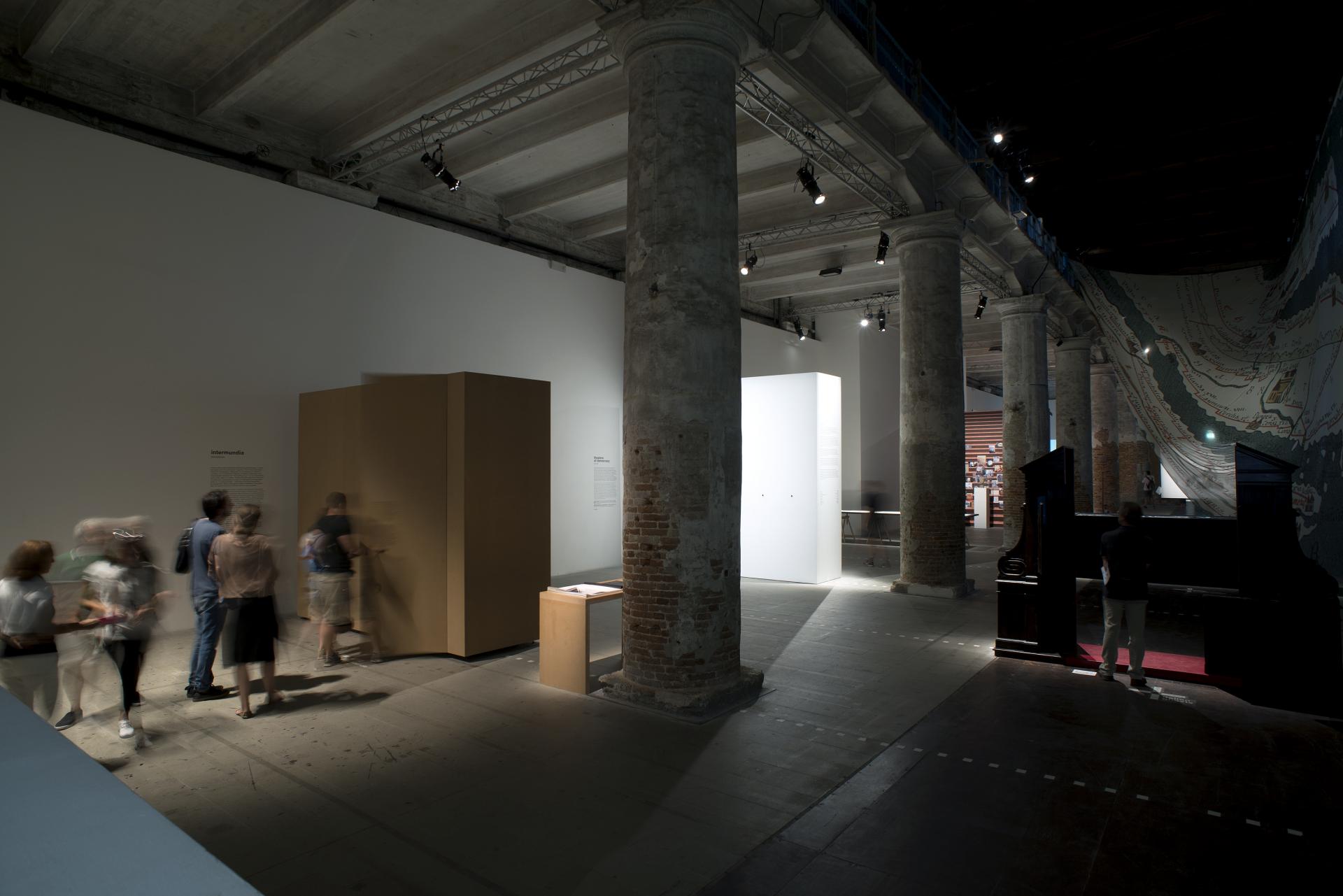
Intermundia at the Venice Biennial in 2014. | Foto © Ana Opalić
Instead of observing Lampedusa as a consolidated institution of the waiting room, as a jailed zone in the middle of conflict, Intermundia attempted a post-human perspective in order to investigate the ambivalent state of in-betweenness. I was aware of the impossibility of cultural translation of such a condition, the understanding of the Other, so the project Intermundia, exhibited and awarded at the Architecture Biennial in Venice 2014, challenged visitors to immerse themselves into a coffin-like light and sound installation. Inducing Verfremdungseffekt, the project asked for solemnity and re-action, and not simply empathy.
I am not sure Intermundia opened the important topic of migration in Europe, but for sure it was a predecessor to the summer of migration in 2015, with the great influx of migrants, refugees and the formation of the so-called Balkan Route.
What does architecture mean to you?
ADB: I dare to say that the fundamental task architecture has is to articulate spatial thinking, thinking capable of asking questions about burning issues of our society in a different way, hence of also creating a different reality. Architecture must offer a space for understanding of the existential condition of an individual and of society, and must also construct a foundation for a life with dignity. We know who we are, and where we belong, precisely through human constructions, both material and intellectual.
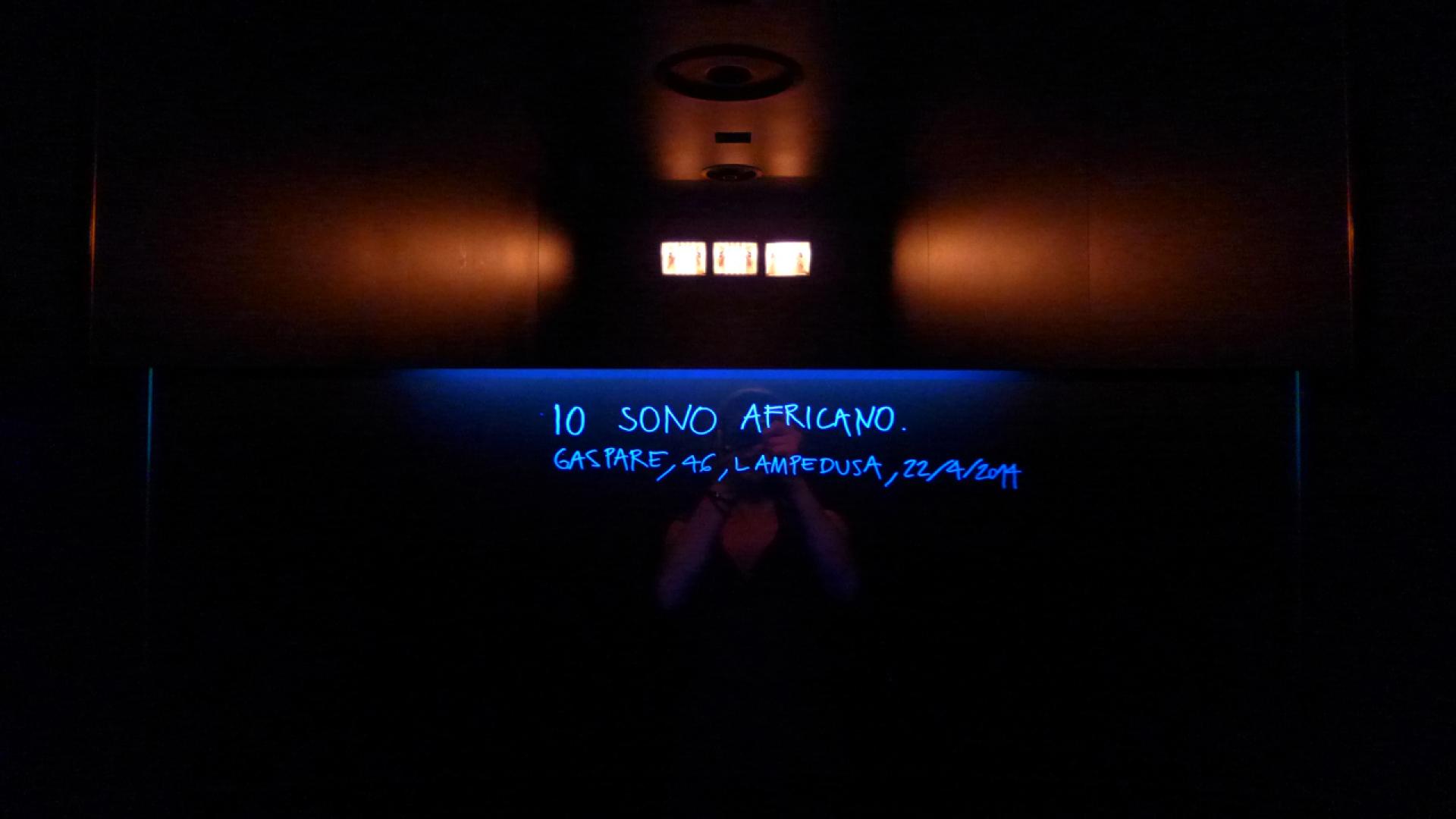
Intermundia "Io sono Africanicano". | Photo © Ana Dana Beroš
-
Ana Dana Beroš (b. 1979) is an architect based in Zagreb, but often explores contested borderscapes of Europe and beyond. Co-founder of ARCHIsquad - Division for Architecture with Conscience and its educational program UrgentArchitecture in Croatia. Her interest is architectural theory, experimental design and publishing as spatializing practice led her to co-found Think Space (2010-2015) and Future Architecture (2016-2021) international platforms, and currently LINA (2022-2025). The LINA member DAI-SAI ongoing project From care to cure and back, under her curation, explores critical architectural heritage on the case of The Children’s Maritime Health Resort of Military Insured Persons in Krvavica, and encourages transformation of both material and immaterial environments from spaces of a common disease into places of common healing. Her project Intermundia on trans- and intra-European migration was a finalist for the Wheelwright Prize at GSD Harvard, and received a Special Mention at the XIV Venice Architecture Biennale curated by Rem Koolhaas (2014). In her pluriannual research and relational reading of migrant bodies and migrant territories, she departs from non-representational theories, the practices of “witnessing” that produce knowledge without contemplation. The fragments of the migratory archive, a border documentarism formed together with the filmmaker and cinematographer Matija Kralj Štefanić, have been made public in different forms and formats, exhibitions and publications (2016-2022) – and lately within a documentary series Three-voiced: Stories on the move (2022-).
Here You can listen to the WELTRAUM interview.
